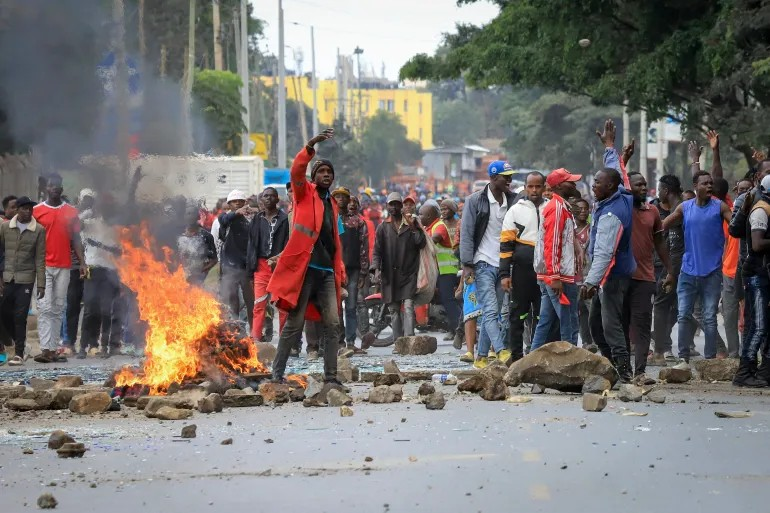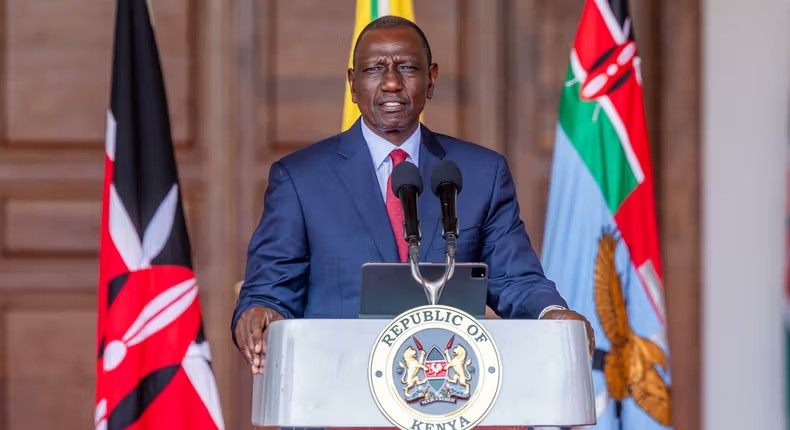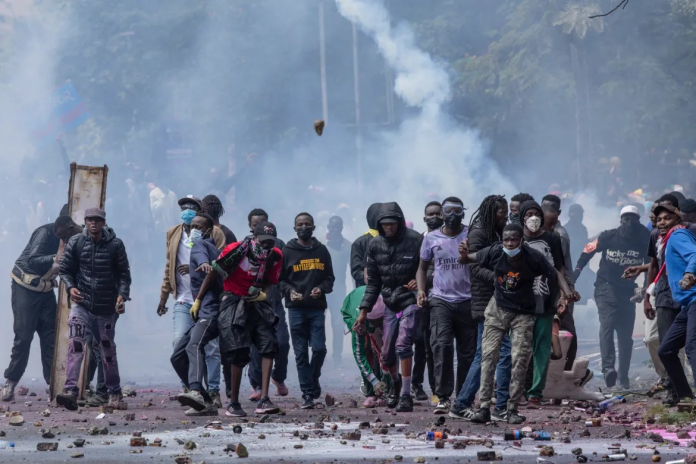Facebook Twitter (X) Instagram Somali Magazine - People's Magazine
Kenya’s recent events have highlighted significant political tensions and public unrest. On July 23, 2024, anti-government protests in Nairobi escalated as demonstrators clashed with a newly emerged pro-government group. The confrontations led to the burning of a motorcycle owned by individuals who supported the president, symbolizing the deepening divide within the nation.
The military was deployed in a rare move, focusing on the main airport, which was a strategic location for the protests. These demonstrations have been ongoing for five weeks, initially sparked by opposition to a finance bill proposing new taxes amid economic hardships. The situation has resulted in numerous casualties, with at least 50 people reported dead and over 400 injured since the protests began on June 18.
Kenya Protester Demands
The main demands of the protesters in Kenya, as of July 2024, revolve around a call for better governance and an end to corruption. Initially sparked by a controversial finance bill that proposed new taxes, the protests have grown into a broader movement seeking significant political reform. The protesters demand the resignation of President William Ruto, a complete overhaul of the Kenya Kwanza administration, and the recall of a majority of the National Assembly representatives, whom they accuse of being tone-deaf to the people’s needs in favor of the regime.

Additionally, there is a call for the appointment of technocrats with integrity to the cabinet, rather than political cronies, which has been a point of contention even after the president’s recent cabinet reshuffle. The demonstrators are also pushing for austerity measures to manage government expenditure and the reconstitution of the Independent Electoral and Boundaries Commission.
This would allow Kenyans to recall legislators they are unhappy with. These demands reflect the citizens’ frustration with the current state of economic management and governance, and their desire for a more accountable leadership. The protests have inspired similar movements in neighboring countries, indicating a regional desire for change and accountability in leadership.
Kenya’s Government Response
The Kenyan government’s response to the protester demands has been multifaceted and evolving. President William Ruto, facing intense pressure from ongoing protests, has taken several steps in an attempt to address the concerns raised by the demonstrators. In a significant move, he dismissed all his appointed cabinet secretaries and announced the formation of a youth engagement committee, the National Multi-Sectoral Forum, which began its sittings in mid-July. Additionally, the president has dropped the contentious Finance Bill 2024, which was at the heart of the public’s grievances due to the proposed new taxes.
In a further response, President Ruto has promised several austerity measures aimed at managing government expenditure, a key issue for the protesters who demand better economic management. He also signed into law the process of reconstituting the Independent Electoral and Boundaries Commission, which would allow Kenyans to recall legislators they are unhappy with, aligning with the protesters’ call for more accountability.

Despite these actions, the government’s response has not been without controversy. The reappointment of half the cabinet, which included individuals previously rejected by Kenyans, sparked additional anger among the protesters. They have been calling for the appointment of technocrats with integrity, not political cronies, to lead the nation forward.
Moreover, the government’s security measures in response to the protests have been a point of contention. A multi-agency team, including officers from the General Service Unit (GSU), was mobilized at Jomo Kenyatta International Airport (JKIA) in response to the Occupy JKIA protests, reflecting the government’s focus on maintaining order at strategic locations. This deployment of security forces, including the military, has been a rare move and indicates the government’s stance on controlling the situation.
President Ruto is also due to make an address to the nation, which may provide further insights into the government’s plans to navigate through the current political crisis. The situation remains fluid, and it is clear that the government is attempting to balance responding to the demands with maintaining stability and order. The outcome of these efforts and the nation’s response to them will be pivotal in shaping Kenya’s political landscape in the coming days.

